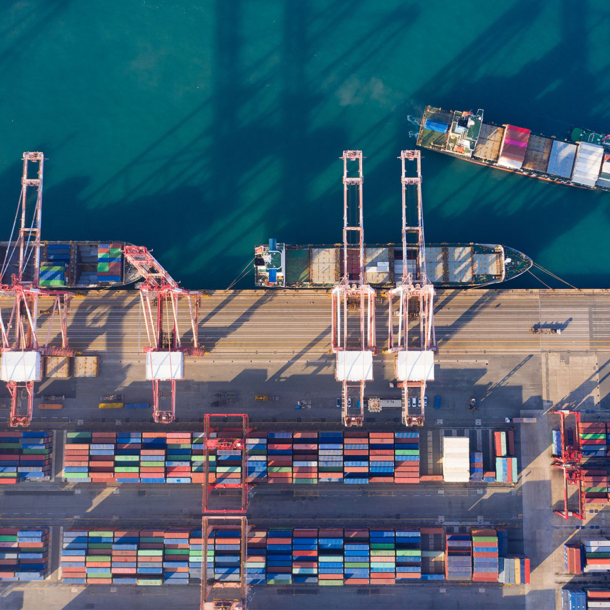Perspectives
Keep
Reading

GW&K Investment Review 1Q 2025
Macro | InsightGW&K Quarterly Investment Review featuring Founder-Chairman and Chief Investment Officer Harold G. Kotler's economic commentary.
Read Article
“Liberation Day” Tariffs: An Unprecedented Break With Free Trade
Macro | InsightGlobal Strategist Bill Sterling takes a deep dive into the implications for investors and shares his latest research.
Read Article
Consumer Spending Faces Crosswinds After Strong 2024
Macro, Domestic Equity | InsightWill consumers stay resilient or pullback? Our Global Strategist Bill Sterling shares his research on spending trends and what they mean for investors.
Read ArticleThis Website Uses Cookies
We use cookies to improve your experience on our website. To accept cookies click Accept & Close, or continue browsing as normal. For more information or to learn how to opt out of cookies, please see our cookie policy.
Accept and CloseStay Updated & Informed with GW&K
GW&K's CIO and Portfolio Managers share their insights and opinions on the economy and market each quarter.
-
Latest Insight
How Reliant is the Municipal Market on Federal Funding?
Municipal Bond
Even amid recent volatility, municipal bonds continued to behave as you’d expect from one of the more stable corners of fixed income.
Download -
Latest Market Commentary
State Of The States 2025 — Poised For Fiscal Stability
Municipal Bond
Fiscal conditions across state governments remain healthy as the sector heads into 2025.
Read Article
Investment Implications Of President Trump’s Trade Policy
GW&K Insights | January 2025
Highlights:
A MAJOR SHIFT IN US TRADE STRATEGY
As President Trump begins his second term, investors are focusing on his plans to reshape global trade — potentially the most significant overhaul of the international trading system since President Nixon closed the gold window in 1971. President Trump did not hike tariffs on his first day in office as some had feared. But he did warn that tariffs of 25% could be applied as early as February 1 to Mexico and Canada and that China could also face higher tariffs soon.
The jury is still out on whether these warnings are simply bluffs to obtain negotiating leverage, or whether they signal a major policy shift. That said, President Trump’s campaign proposals included broad tariffs of 10% to 20% on most trading partners and potentially 60% or higher on Chinese goods. A recent paper by Dr. Stephen Miran, Trump’s newly appointed chair of the Council of Economic Advisors (CEA), provides insights into the rationale and likely investment implications of such decisive trade measures.1
Understanding the Core Problem
The fundamental issue, according to Miran, lies in the dollar’s role as the world’s reserve currency. This status creates what economists call the “Triffin dilemma”: as the global economy grows, the US must run increasingly large trade deficits to supply the world with dollars. This situation has led to three major consequences:
THE PROPOSED SOLUTION: TARIFFS AND CURRENCY POLICY
Tariffs as Tools and Revenue Sources
Miran advocates for a significant shift from current policy, suggesting:
Are Inflation Concerns Manageable?
Miran argues that inflation risks from higher tariffs could be manageable because:
• Foreign currency depreciation often offsets tariff impacts
• Previous tariffs on Chinese goods (2018 – 2019) led to modest price increases (Figure 5)
• The Federal Reserve can adjust monetary policy to prevent sustained inflation
• Expected CPI impact would be limited to 0.3% –0.6%, primarily as a one-time adjustment
Careful Currency Intervention
While not an immediate priority, a weaker dollar policy could eventually become part of the strategy:
Aligning Trade Policy with National Security
Trade policy would be explicitly linked to national security, with market access tied to defense cooperation. As Miran states, “Countries that want to be inside the defense umbrella must also be inside the fair-trade umbrella.”
Investment Implications
Miran’s investment conclusions are as follows:
HISTORY HIGHLIGHTS THE DOWNSIDE RISKS OF SUCH A POLICY
Miran’s conclusions notwithstanding, historical evidence suggests investors should carefully weigh the potential downside risks of aggressive trade policy changes. A comprehensive International Monetary Fund (IMF) study analyzing five decades of data across 151 countries found that significant tariff increases typically led to:2
These effects were particularly pronounced in advanced economies during periods of economic growth, suggesting that protectionist measures could be especially counterproductive in current market conditions (Figure 6). Note also that the size of tariff hikes being contemplated are 10x to 20x in economic magnitude compared to the previous hikes on Chinese goods (2018 – 2019) that are offered as evidence for minimal inflation effects (Figure 7).
CONCLUSION
The proposed changes represent the most dramatic restructuring of global trade since the collapse of the Bretton Woods system in 1971. While the administration may implement changes gradually with careful attention to market stability, investors should prepare for potential volatility and closely monitor developments in trade and currency dynamics. The historical record suggests that managing the transition while avoiding negative economic consequences will require careful execution and coordination between fiscal and monetary authorities.
1 Stephen Miran, “A User’s Guide to Restructuring the Global Trading System,” Hudson Bay Capital, November 2024. This paper was written prior to Miran’s appointment as Chief of the CEA and did not purport to speak on behalf of President Trump or his team.
2 Davide Furceri, S. Hannan, J. Ostrey, A. Rose, “The Macroeconomic Consequences of Tariffs,” IMF Working Papers No. 2019/009, January 15, 2019.
William Sterling, Ph.D.
Global StrategistDisclosures
The views expressed are those of the interviewee and do not necessarily reflect the views of GW&K Investment Management. Any statements made should not be construed as a recommendation of individual holdings or market sectors, but as an illustration of broader themes. This interview is strictly for informational purposes only and does not constitute investment advice. Views expressed are as of the date indicated, based on the information available at that time, and may change based on market and other conditions. Please consult with a qualified investment professional before making any investment decisions. Investing involves risk, including possible loss of principal. Past performance is no guarantee of future results. Data is from what we believe to be reliable sources, but it cannot be guaranteed. GW&K assumes no responsibility for the accuracy of the data provided by outside sources. © GW&K Investment Management, LLC. All rights reserved.